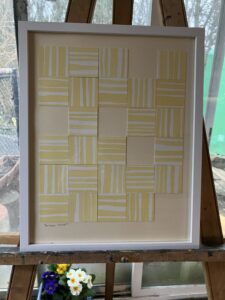It’s an honor and a blessing for me to be published for the second time in “Benedictines”, the journal published by the Benedictine Sisters of Mount St. Scholastica Monastery in Atchison, KS. This essay appears in the 2025 Spring/Summer issue.
Synods — official meetings called to discern the intent of the Holy Spirit in the workings of the Church — have been a feature of Christianity since at least the 2nd century. The linguistic origins of the word describe a dynamic process of inquiry: the Greek syn– “together” + hodos “traveling, journeying”. When Pope Francis initiated the most recent synod in 2021, with assemblies taking place in 2023 and 2024, its topic almost seemed reflexive. “The Synod on Synodality” has certainly proved timely.
***
The condition of the world today highlights the need for synodality, a charism based on the common grounds of collaboration, cooperation and community. Indeed, such a graced charism is always needed. Synodality is quite Benedictine in nature, especially given the virtue of hospitality that we are known for.
Consider what hospitality is: offering what we have to each other, while being receptive to what others offer us. These are not quid pro quo transactions, but gifts based on generosity and expansiveness. They foster interpersonal growth. Opening ourselves invites others to do the same. Individuals, while retaining their unique God-given natures, learn to recognize the goodness in coming together in a welcoming environment. When simple acts of hospitality are seasoned with other core Benedictine values, the power of synodality in our personal and public lives is evident.
Think about how many aspects of the Rule are related to hospitality. For example, what happens when humility forms the basis for right relationship with others? When the ear of one heart hears the other hearts of the world with clarity and charity? What happens when the mindfulness of obedience brings attention to the needs of others, and also allows those needs to prevail? When decision-making takes into account the viewpoints of others? When a knock at the front door is answered by someone who offers a blessing to the visitor? All these examples, and more, express synodality. Peace is sown in our uneasy world and has a chance to grow.
And which aspect of Benedictine hospitality changes the “chance” of peace into reality? The one that is pre-eminent: that anyone who comes into our life, even a random visitor, is to be welcomed as Christ. Our habitual acts of synodality are thus transformed into holy acts of love. The Kingdom of Heaven begins to unfold before us.
***
“What is the kingdom of God like? To what can I compare it?” Jesus asks in Luke’s Gospel (13:18). Perhaps to Queen of Angels Monastery?
The 2024 Fall/Winter issue of Benedictines told the story of how the resilient community of sisters and oblates in Mount Angel, Oregon, has faced completion, an intricate and ongoing process. Seen through the lens of synodality, the Queen of Angels experience shows the importance of dedication to radical hospitality.
Every aspect of the downsizing, closing, sale and repurposing of the Monastery property has had one goal in mind and heart: continuing the historic mission of the Benedictine Sisters as teachers, healers and spiritual leaders. For close to a century and a half, the sisters welcomed people in need, offering peace and loving sustenance to all, especially the poor and the vulnerable. Thus, the sisters worked to unfold God’s Kingdom.
And now, this mission of hospitality and service has been embraced by the new stewards of Queen of Angels, Catholic Community Services. CCS is well known as a “friend” of the Monastery and a respected provider of a broad array of social services. The consolidation and expansion of many of CCS’s long-standing ministries onto the Monastery property and into its buildings began in earnest earlier this year.
The former maintenance shop is within weeks of reopening as a new and improved food bank and resource center that will welcome individuals and families facing all forms of adversity. Remodeling the sisters’ previous residential quarters into housing for expectant and new mothers enrolled in the pregnancy support program is almost complete. The family shelter, also located in remodeled space, is about to open its doors to its new residents. In every case, the number of people able to be served will be beyond all previous limits. At the same time, two core Queen of Angels ministries continue to thrive: retreats and the oblate program.
Thanks to these endeavors and more, new local life is flowing through the Monastery property. Adult and youth retreatants fill dormitories many weekends. Local residents as well as tourists are exploring the 30 park-like acres (whose orchards and gardens are also being cultivated anew). A Catholic high school opened some years ago has increased its enrollment, while the voices of shelter children at play in their new “back yard” will soon be heard.
At Queen of Angels, completion is being transformed into active engagement. The synodality spotlighted by Pope Francis is alive and well, with collaboration and cooperation creating a welcoming new community. Hospitality, supported by all the many Benedictine virtues, is leading the way.







